Archivo de noticias y eventos
51 - 100 de un total de 1805
También puede acceder a la lista de noticias publicadas en los medios relacionadas con el Instituto de Astrofísica de Andalucía - CSIC.
Pages
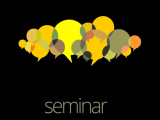
|
23/01/2025 - 12:30
Study of the very high energy emission from star-forming regions and young massive star clusters Cosmic rays (CRs) are a fundamental component of the Cosmos. They can penetrate and ionise the dense gas core of molecular clouds, affecting the dynamics of the cloud itself and triggering chemical reactions that lead to the creation of complex molecular compounds. In star-forming complexes, CRs can be accelerated by the wind of newly born massive stars, often found in young massive stellar clusters (YMSC). The amount of freshly injected CRs can... Dr. Gaia Verna |

|
31/01/2025 - 12:30
Resolving Stellar Angular Diameters with Asteroid Occultations Occultations have been used for measuring stellar angular diameters since 1936 when French astronomy M. A. Arnulf measured the radius of Regulus during a lunar occultation. Since then, astronomers have used lunar occultations to measure the angular diameters of hundreds of bright stars m≤5. The technique of measuring an angular diameter using lunar occultations is based on the diffraction of light around the limb of the moon. With this technique... Joshua Bartkoske |
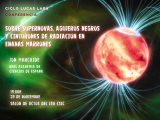
|
28/11/2024 - 19:00
Sobre supernovas, agujeros negros y cinturones de radiación en enanas marrones En la charla se abordará de modo conciso lo que es esencial a cada uno de esos descubrimientos que nos han permitido conocer los detalles de la expansión de las supernovas, del entorno de los agujeros negros masivos y de los cinturones de radiación que rodean a las enanas marrones como lo hacen a Júpiter o la Tierra. Jon Marcaide |

|
02/12/2024 - 02/12/2024
https://indico.iaa.csic.es/event/18/ Granada |

|
31/10/2024 - 31/10/2024
https://indico.iaa.csic.es/event/17/ Granada |

|
03/12/2024 - 12:30
Experimental ice simulations for the interpretation of ice and organics observations in the Solar System The harsh conditions in space (ultra-high vacuum, cryogenic temperatures, and radiation) are simulated in laboratory chambers to study ice properties and processes. UV photons/X-rays/ions impact on the ice covering microscopic dust particles in dense interstellar clouds, comets, icy moons and planetary surfaces. Radiation produces radicals and reactive species changing the initial composition of the ice (made of simple species like... Dr. Guillermo Muñoz Caro |

|
12/12/2024 - 12:30
Informative Session for Foreign New Hires If you are a foreigner who has recently joined the IAA and haven not yet completed all the steps to formalize your residency in Spain, or if you would like to learn about some of the optional bureaucratic procedures that could make things easier for you living here, please join us for this informative session led by the Area of Visitor Assistance. Lauren C. Smith |

|
25/11/2024 - 25/11/2024
https://indico.iaa.csic.es/event/20/ Granada |
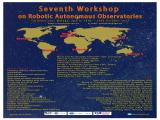
|
16/10/2024 - 20/10/2024
http://astrorob.iaa.es Torremolinos |

|
10/12/2024 - 12:30
ESERO, from space to the classroom With the slogan ‘from space to the classroom’, and building on the fascination that students have for space, the European Space Agency's (ESA) European Space Education Resource Office in Spain (ESERO Spain) provides resources to primary and secondary school teachers to improve their literacy and STEM (Science, Technology, Engineering and Mathematics) skills. Using the theme of space as a context for inspiration and motivation, ESERO runs a... Dr. Manuel González |
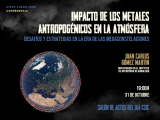
|
31/10/2024 - 19:00
Impacto de los Metales Antropogénicos en la Atmósfera: Desafíos y Estrategias en la Era de las Megaconstelaciones En las próximas décadas se espera un incremento significativo en el número de satélites en la órbita baja terrestre, principalmente impulsado por el crecimiento de las megaconstelaciones de telecomunicaciones de banda ancha. La estrategia de 'cero residuos' de las agencias espaciales busca evitar la generación de grandes cantidades de basura espacial mediante la desintegración programada de vehículos usados y satélites inactivos en la atmósfera... Juan Carlos Gómez Martín |

|
14/11/2024 - 12:30
Ozone and the Search for Life in the Universe As we approach the era where we will be able to characterize the atmospheres of terrestrial exoplanets, we are put on a path to answer one of humanity's most compelling questions: are we alone in the universe? Molecular oxygen (O2) with a reducing gas (i.e., methane) is widely regarded as a promising biosignature - a sign of life in the atmospheres of terrestrial exoplanets. However, there are circumstances in which O2 will be very difficult or... Dr. Thea Kozakis |

|
06/02/2025 - 12:30
Equality and harrassment in the CSIC. A case of study: IAA In this talk I will present the equality plans in the CSIC with a critical look at the particular situation of the IAA. I will focus on the current IAA Equality plan (the first one) and the changes it needs to live in an increasingly friendly environment. Equality will have a positive impact on the quality of the science we produce. Dr. Josefa Masegosa Gallego |
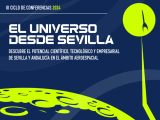
|
04/10/2024
El Universo desde Sevilla III Esta iniciativa, que se desarrollará con tres ponencias durante los meses de octubre y noviembre, está coordinada por el investigador del Instituto de Astrofísica de Andalucía (IAA-CSIC) Emilio J. Alfaro Navarro. |

|
03/10/2024
Un congreso debatirá sobre las implicaciones de la astrofotografía en investigación y divulgación El Congreso Astrofotografía 2024 se celebrará en el Rectorado de la UCO del 4 al 6 de octubre El Instituto de Astrofísica de Andalucía (IAA-CSIC) es patrocinador y forma parte del comité organizador local (LOC) |

|
31/10/2024 - 12:30
Using CHEOPS to confirm small transiting exoplanets orbiting bright stars Exoplanets which transit their host stars are unique in allowing detailed characterisation of planetary radius, mass and atmospheric properties. NASA's TESS mission, which has so far observed 97% of the sky with precise photometry, is especially adept at detecting small transiting planets orbiting the brightest... Dr. Hugh Osborn |

|
09/09/2025 - 12:30
TBP tbp Dr. Pedro de la Luque Torre |

|
06/11/2024 - 12:30
New UGR proceedings for PhDs Every year we all doubt what needs to be done and uploaded for the university. This is a reminder and updated seminar about the current proceedings that affect the PhD, especially important since the UGR has modified some things recently. Dr. Antonio García Hernández |

|
24/10/2024 - 12:30
SO colloquium: Role of Astrophotonics in Astronomy: The MARCOT Pathfinder Dr. Kalaga Venu Madhav, a renowned astrophysicist from the Leibniz Institute for Astrophysics Potsdam, will present a colloquium on the role of astrophotonics in astronomy, focusing on the MARCOT Pathfinder project. The talk will cover advancements in astrophotonic technologies and their applications in modern astronomical instrumentation. Dr. Madhav will discuss the development and implementation of photonic devices in telescopes, their impact... Dr. Kalaga Madhav |

|
21/11/2024 - 12:30
Towards the Standardization of the Modeling of Multi-Frequency Observations Blazars, a class of Active Galactic Nuclei (AGN) with relativistic jets oriented toward Earth, are powerful and highly variable emitters across the electromagnetic spectrum. Time-domain multi-messenger and multi-wavelength (MWL) studies are essential for understanding the physical processes at work on these systems, yet they often rely on proprietary tools specific to each instrument for reconstructing and modeling the collected data. In this... Dra. Mireia Nievas Rosillo |
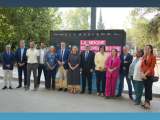
|
23/09/2024
La Noche Europea de l@s Investigador@s llega con 300 actividades para hacer la ciencia más cercana y social El IAA-CSIC participa con talleres, charlas y una mesa de realidad virtual en un stand propio en el Paseo del Salón |

|
13/09/2024
La Noche de l@s Investigador@s 2024 Tenéis cita con la Noche Europea de l@s Investigador@s el 27 de septiembre en Granada, en el Stand del IAA-CSIC en el Paseo del Salón. |

|
26/11/2024 - 28/11/2024
https://indico.iaa.csic.es/e/HighEnergyPulsars |

|
27/09/2024 - 12:30
Who Is Afraid of the Dark (Energy)? Cosmic acceleration dominates the behavior of the recent universe, with some fundamentally new physics at its heart. Recent data gives a tantalizing suggestion that the dark energy behind it is more complicated than a cosmological constant. Nevertheless, we do know a lot about how to describe dark energy behavior. Data within the next year has great promise to give further insight, and exciting new instruments are being planned. Dr. Eric Linder |

|
10/10/2024 - 12:30
Uncovering the magnetized path of massive star formation Both observational and theoretical studies suggest that the magnetic field plays an important role in the process of massive star and cluster formation. However, many open questions still remain, including the exact role of B-field at the different scales (from cloud to disk scales) and its importance compared to turbulence, feedback and self-gravity. Multi-scale studies of the morphology and strength of the magnetic field are thus crucial to... Dr. Chi Yan (Paul) Law |

|
17/10/2024 - 12:30
SO Colloquium: Radio eyes for the Sun, Heliosphere and Ionosphere: Status and plans for the SKAO era The Square Kilometre Array Observatory (SKAO) represents a monumental leap in radio astronomy technology, promising to redefine our understanding of the universe through its unprecedented capabilities. As we stand on the brink of the SKAO era, this talk aims to elucidate the transformative potential of SKAO for solar physics, heliospheric, and ionospheric research. The SKAO's advanced radio telescopes, with their superior angular, spectral, and... Dr. Pietro Zucca |

|
13/02/2025 - 12:30
SO Colloquium: Present and future of exoplanet research The search for new worlds in the Galaxy in the past three decades has been highly successful and the prospects for the next decade are even brighter. A succession of space missions and ground-based facilities defines a timeline extending well into the 2030s. Many advances on the planet discovery front will come from the PLATO mission, which will find long-period planets and even true Earth analogues, and from the many ongoing and future precise... Dr. Ignasi Ribas |

|
28/11/2024 - 12:30
SO Colloquium: Cosmic chemical evolution: here, there, and everywhere Metals play a very important role in star formation and stellar evolution. Amongst other things they control the cooling of the interstellar gas, thus allowing the formation of stars; they affect the radiation transport, through the opacities involved in the different microscopic processes; and they have the most important role in the dust formation and in the mass loss from stars. Metals are formed inside stars. Therefore, it is expected that... Profa. Ángeles Díaz |

|
26/09/2024 - 11:00
The stellar distribution in ultra-faint dwarf galaxies suggests deviations from the collisionless cold dark matter paradigm Unraveling the nature of dark matter (DM) stands as a primary objective in modern physics. I will present evidence suggesting deviations from the collisionless Cold DM (CDM) paradigm. In the standard cosmological model the dark matter (DM) particles are collisionless and, because of this very nature, they develop halos with the characteristic central cusp known as NFW profile. Real galaxies do not show NFW profiles but, rather, have a DM mass... Dr. Jorge Sánchez Almeida |
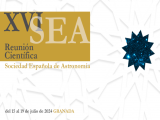
|
15/07/2024 - 19/07/2024
https://www.granadacongresos.com/sea2024 Granada |

|
04/11/2024 - 08/11/2024
https://indico.iaa.csic.es/event/16/ Granada |
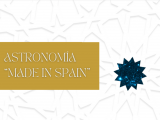
|
17/07/2024
Astronomía “Made in Spain" En el marco de la XVI Reunión Científica de la SEA (15-19 de julio), el IAA-CSIC ha organizado este evento |
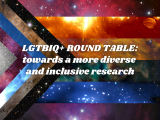
|
25/06/2024
LGTBIQ+ ROUND TABLE: towards a more diverse and inclusive research Con motivo del Día Internacional del Orgullo LGBT, la Comisión de Igualdad, Diversidad e Inclusión del IAA-CSIC organizó el 25 de junio la mesa redonda "LGTBIQ+ ROUND TABLE: towards a more diverse and inclusive research" |

|
24/09/2024 - 12:30
Constraining the Meteoroid Flux in the inner solar system The inner solar system is populated by Interplanetary Dust Particles (IDPs) released from cometary trails and collisions between asteroids. Planetary bodies and satellites therefore encounter a cloud of IDPs along their orbits, giving rise to a permanent bombardment on their respective atmospheres or surfaces. Constraining the magnitude of the mass influx of IDPs onto a solar system body is crucial for understanding the effects in their... Dr. Juan Diego Carrillo Sánchez |

|
20/06/2024
Mujer en la Ingeniería: Avances y Retos La Comisión de Igualdad, Diversidad e Inclusión del IAA-CSIC, con motivo del Día Internacional de las Mujeres en la Ingeniería (23 de Junio), ha organizado la conferencia “Mujer en la Ingeniería: Avances y Retos”, a cargo de Laura M. Roa, catedrática de Ingeniería de Sistemas y Automática de la Universidad de Sevilla |

|
23/07/2024 - 12:30
The QUIJOTE experiment: status, latest results and future plans I will review the current status and future plans of the QUIJOTE (Q-U-I JOint TEnerife) experiment, a project with the aim of characterising the polarisation of the Cosmic Microwave Background, and other galactic or extragalactic physical processes that emit in microwaves in the frequency range 10-42GHz, and at large angular scales (1 degree resolution). The project has two radio telescopes (2.25m primary aperture) and three instruments, MFI (10... Dr. José Alberto Rubiño Martín |
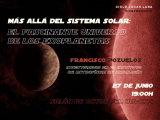
|
27/06/2024 - 19:00
Más allá del sistema solar: el fascinante universo de los exoplanetas La búsqueda de exoplanetas, aquellos planetas que están fuera de nuestro sistema solar, ha revolucionado nuestra comprensión del universo y de nuestro lugar en él. Desde el descubrimiento del primer exoplaneta orbitando una estrella tipo solar en 1995, la astronomía ha experimentado un renacimiento tecnológico y teórico que ha permitido identificar miles de estos mundos alienígenas. En esta charla, exploraremos el fascinante campo de la... Francisco Pozuelos |

|
30/09/2024 - 13:00
High-Resolution Study of Blazar TXS 2013+370 and BEAM: A Space Technology and Research Student Team The talk will focus on two key areas. Part one will present the high-resolution imaging of Blazar TXS 2013+370, a study conducted as part of an M.Sc. thesis. This research aims to resolve the inner jet structure of the compact radio source TXS 2013+370 in total intensity and polarization. This analysis utilizes VLBA data combined with Effelsberg observations at frequencies of 22 GHz, 43 GHz, and 86 GHz. Part two will highlight BEAM, a student... Giorgos Michailidis |
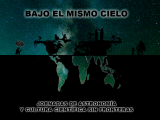
|
10/06/2024
Bajo un mismo cielo Actividad realizada conjuntamente con tres ONG: Acción en red; Granada Acoge y Provivienda |

|
20/06/2024 - 12:00
Mujer en la Ingeniería: Avances y Retos En esta conferencia presentaremos, en primer lugar, una panorámica de la situación actual de la mujer en las STEM y en particular en la ingeniería, tratando de analizar qué factores pueden tener una mayor influencia en la situación actual. A continuación trataremos brevemente la educación de la mujer en los dos últimos siglos. Destacaremos el hecho de como las formas de educar a la mujer están directamente relacionadas con el trabajo que... Dr. Laura Roa |

|
27/06/2024 - 12:30
Multiple components in the protostellar system HH 212: Infalling envelope, nested shell, MHD disk winds, and free wind gas I will present the Atacama Large Millimeter/submillimeter Array Band 7 observations at ~24 au spatial resolution of the CO (J=3-2) and H13CO molecular lines emission of the protostellar system HH 212 and compare them with the emission of the SiO (J=8-7) and SO (J=8-7) molecular lines. From the large to small scale, previous observations have detected the infalling envelope, CO outflow shell, SO disk wind, SiO expanding shell and jet in the... Dr. Alejandro López-Vázquez |

|
25/06/2024 - 11:00
Intersexionality, a key work for diversity? Since we are children we have been taught what we are and we learn how to fit into a set of infinite boxes. Each of these boxes defines us and, at the same time, can be used to discriminate against us, in life and at work. Diversity exists and it could be an advantage for our society. As scientists we should understand how to take care of diversity and use it to improve our work and life quality. One of the main problems in the past has been... Dr. Eleonora Fiorellino |

|
23/05/2024 - 19:00
Acerca de la Cosmología La Cosmología como ciencia empírica comenzó en los años 20 del pasado siglo. Desde entonces varios hitos observacionales han inspirado y sostenido el mejor modelo cosmológico que nos hemos podido dar. Sin embargo la materia y la energía oscura, la masa de los neutrinos, y otros nuevos datos observacionales nos obligan a replantearnos algunas preguntas y explorar, quizás, otras aproximaciones a la pregunta de cómo se formó y evoluciona... Mariano Moles |
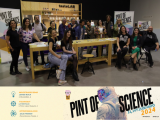
|
06/05/2024
El festival Pint of Science organiza 18 charlas de divulgación científica en los bares de Granada El festival internacional de divulgación científica se celebrará los días 13, 14 y 15 de mayo en toda España, con entrada gratuita En Granada, Pint of Science se celebrará en los bares La Tertulia, Lemon Rock y Sala Premier El programa completo puede consultarse en https://pintofscience.es/events/granada |

|
06/06/2024 - 12:30
A complex network perspective on Delta Scuti stars We apply horizontal visibility graphs (HVG) to study the complex network behavior for the delta Sct stars’ light curves observed by TESS. The delta Sct stars are pulsating stars with spectral types A0-F5 and intermediate masses between low-mass stars (≤ 1 Msun) and high-mass stars (≥ 2 Msun). They pulsate in low-order pressure modes and have dominant pulsation frequencies in the 5-80 d−1 range. The high amplitude delta Sct stars (called HADS),... Dr. Elham Ziaali |
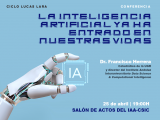
|
25/04/2024 - 19:00
La Inteligencia artificial ya ha entrado en nuestras vidas La conferencia tratará tres aspectos fundamentales de la multiplicidad prismática de la IA: a) no va a llegar, ya está aquí, con nosotros, desde hace tiempo; b) la IA generativa, ¿ayudante o sustituto?; y c) la eclosión de la IA, riesgos y regulación. Prof. Dr. Francisco Herrera |

|
30/09/2024 - 04/10/2024
https://www.granadacongresos.com/eris2024 Granada |

|
23/04/2024 - 18/06/2024
https://indico.iaa.csic.es/event/15/ Granada |
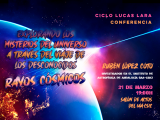
|
21/03/2024 - 19:00
Explorando los misterios del Universo a través del viaje de los desconocidos Rayos Cósmicos Los rayos cósmicos -partículas cargadas ultrarrelativistas que bombardean la Tierra desde todas los puntos del cielo- son invisibles al ojo humano pero contienen información sobre los procesos más fundamentales del Universo, tales como su creación y evolución. Estas partículas se producen en los procesos más violentos del Universo y su observación directa no nos da información acerca de... Rubén López-Coto |
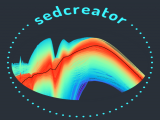
|
17/06/2024 - 18/06/2024
https://indico.iaa.csic.es/event/10/ Granada |